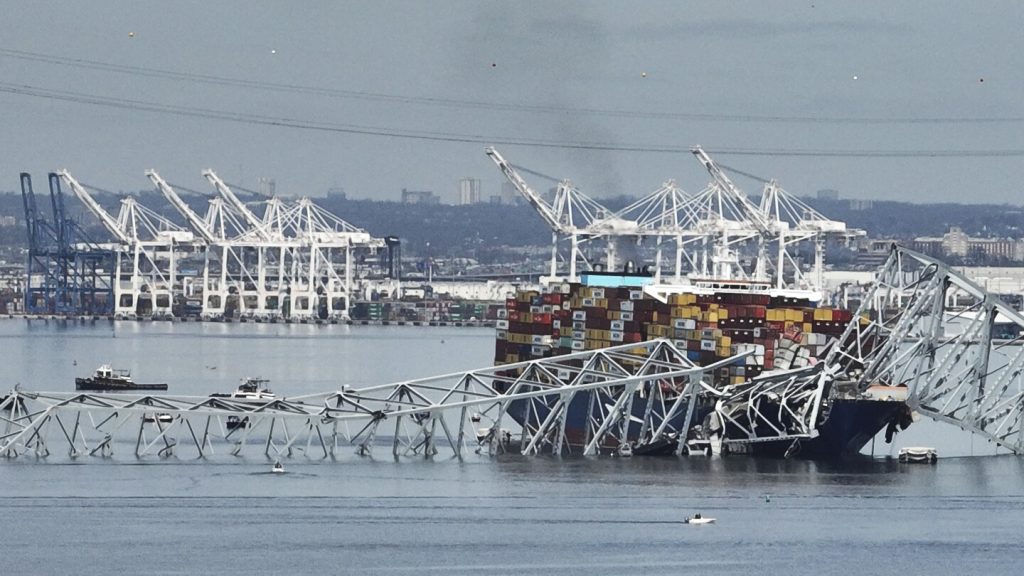A tragic incident has occurred in Maryland as the iconic Francis Scott Key Bridge collapsed into the Patapsco River after being struck by a cargo ship. The bridge, named after the author of “The Star-Spangled Banner,” was a well-known and vital part of Baltimore’s transportation infrastructure. The collapse resulted in the deaths of six individuals who were still unaccounted for at the time of the incident. The bridge had been in place for almost five decades and was a regular commuting route for 30,000 people each day, making it a key cog in the region’s transportation system.
The Francis Scott Key Bridge was erected near the spot where the author witnessed the bombardment of a fort that inspired the writing of America’s national anthem. It held a significant historical and cultural value for the city of Baltimore, visible from downtown office towers and serving as a daily routine for commuters and a crucial artery for commerce. Its collapse has deeply impacted the harbor, port, and families in the area, changing the landscape of the city. The bridge was designed as an outer crossing of the Baltimore Harbor and opened in 1977 as the final link in Interstate 695, also known as the Baltimore Beltway.
The collapse of the Francis Scott Key Bridge has left residents and officials in shock and disbelief, with memories of its construction and significance in the local community vividly remembered. The structure was built within close proximity to where Key witnessed the historic British bombardment of Fort McHenry, which led to the writing of the national anthem. The construction of the bridge began in the early 1970s as a solution to heavy congestion and delays faced by motorists using the Baltimore Harbor Tunnel. The collapse of the bridge has raised concerns about the safety and maintenance of aging infrastructure across the country.
Despite the tragic loss and devastation caused by the collapse of the Francis Scott Key Bridge, the city of Baltimore remains resilient and determined to overcome this challenge. The choice of Key as the bridge’s namesake honors the city’s toughness and perseverance in the face of adversity, reflecting the spirit of American resiliency embodied in “The Star-Spangled Banner.” The collapse of the bridge has not only affected the transportation infrastructure of the region but has also left a profound impact on the community, highlighting the importance of maintaining and ensuring the safety of critical infrastructure for the well-being of residents. As rescue operations continue and investigations into the cause of the collapse are initiated, the city mourns the loss of a beloved landmark and prepares to rebuild and recover from this tragedy.















